Loading and transporting hay may seem like a routine task, but for farmers and livestock owners, it’s a critical operation where safety, efficiency, and equipment choices directly impact productivity. This guide covers the essential steps and best practices for loading hay bales—from choosing the right trailer for farm transport to securing the load properly for safe delivery. Whether you’re moving large round bales or compact square ones, knowing how to handle the process correctly is key to protecting your feed quality and meeting transport regulations.
So, what’s the best way to load hay for transport? It comes down to three main factors: using the right trailer type, following a step-by-step loading procedure, and ensuring every bale is securely strapped for the journey. Failing to account for trailer limits or stacking stability can lead to damaged hay, delivery delays, or even roadside accidents. That’s why mastering hay loading techniques, especially for long hauls, is essential for any farm that depends on efficient feeding operations.
Curious about which trailers are best for hay hauling? Wondering how to avoid the most common mistakes during loading? This article breaks it all down with practical advice and expert tips—so you can work smarter and transport with peace of mind. And if you’re seeking dependable farm machinery to support your harvest and transport tasks, MINNUO’s professional-grade solutions are designed to handle your toughest jobs with precision and care.
Contents
Start With the Right Tools and Transport
Hay plays a vital role in livestock feeding and animal health—especially during non-growing seasons. Whether you’re hauling your own hay harvest or receiving bales from another supplier, how hay is loaded, secured, and transported directly affects not just safety, but feed quality and delivery timelines. Done poorly, it can lead to delays, spoiled bales, or even accidents on the road. But with the right planning, equipment, and technique, you can ensure that hay is moved efficiently and safely—every time.
This guide breaks down the step-by-step process of preparing hay for transport, what kind of trailers and tools are best for the job, and how to avoid the most common mistakes made during hay loading.Before you even lift the first bale, the success of hay transport starts with choosing the right equipment. This includes both the hauling trailer and any loading tools, such as forklifts, bale spears, or loader attachments.
If you’re moving a significant amount of hay or working with oversized bales, a specialized hauler or logistics expert can be invaluable. Many farmers turn to third-party agricultural transport services to ensure the job is done right. These professionals not only have access to the proper trailers but also understand load regulations, safety limits, and permitting.
Tip: Avoid older or rusty trailers with uneven decks—they can compromise the safety of your load and make strapping down hay more difficult.
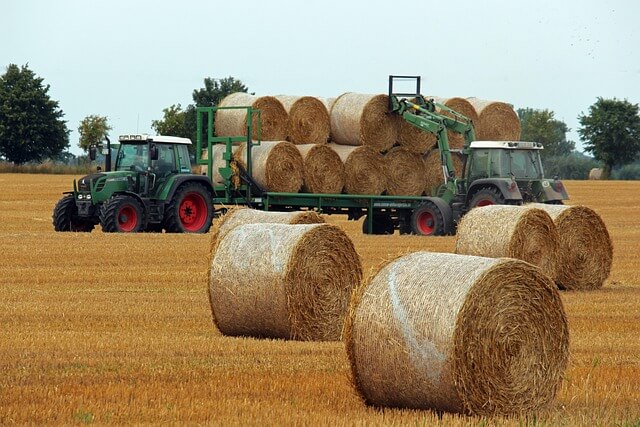
Step-by-Step: How to Load Hay Safely and Efficiently
Loading hay for transport isn’t complex—but it does require planning. Follow these core steps for safe, legal, and damage-free hauling:
Step 1: Select the Right Trailer
Choose a trailer that can support the weight and volume of your hay bales. Common choices include flatbed trailers, step deck trailers, and low-boy trailers. Each has advantages depending on bale size (round vs. square) and load height limits.
Expert tip: Always inspect tires, brakes, and deck condition before loading.
Step 2: Know Your Weight Limits
Overloading your trailer or tow vehicle can lead to dangerous situations and even legal fines. Know your Gross Vehicle Weight Rating (GVWR) and check local/state hauling regulations for max load height and width.
Avoid this mistake: Ignoring bale moisture content. Wet bales are heavier than dry ones and can throw off your weight calculations.
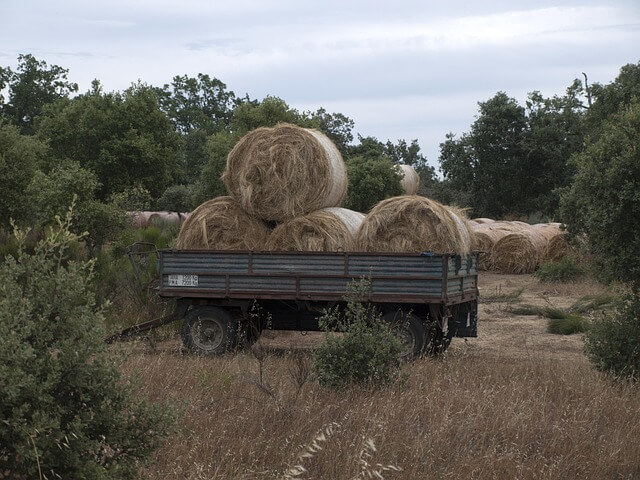
Step 3: Prepare a Safe Loading Area
Clear your loading area of debris, tools, or obstacles. Uneven ground or clutter can cause unstable stacking and loader accidents. Ensure the trailer is parked on flat, solid ground and properly braked.
Gear to have ready:Bale hooks,Forklift or front-end loader,Straps or twine,Gloves and safety boots,Warning signs if loading near roads
Step 4: Sort and Position Your Bales
Organize bales by size, shape, and moisture content. Stack heavier or larger bales on the bottom to create a solid base. Keep bales aligned to reduce gaps and tipping risk.
For round bales: Place them flat (not standing on edge) to avoid rolling during transit.
For square bales: Stack them brick-style, overlapping seams for added stability.
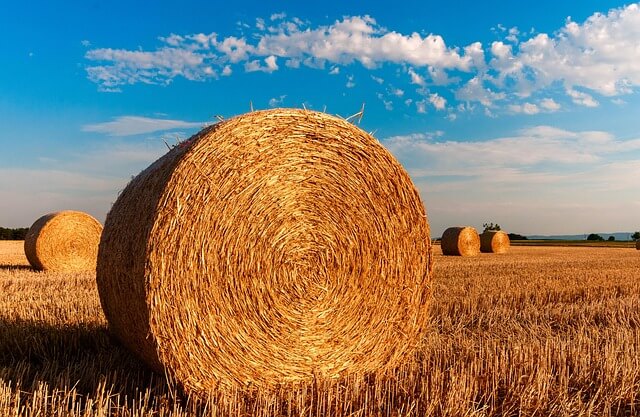
Step 5: Load Methodically From the Bottom Layer
Begin loading from one end and work layer by layer. A balanced bottom layer is critical. Bales should sit lengthwise and evenly across the width of the trailer to reduce swaying.
Safety reminder: Never stack above the legal height (usually 13’6″ in most U.S. states).
Step 6: Secure With Straps or Twine
Once the load is stacked, secure it tightly using ratchet straps, rope, or reinforced twine. Apply downward tension and run multiple lines across each row. Attach the straps to anchor points on both sides of the trailer.
Double-check: Tug each strap for tension and inspect knots or hooks before hitting the road.
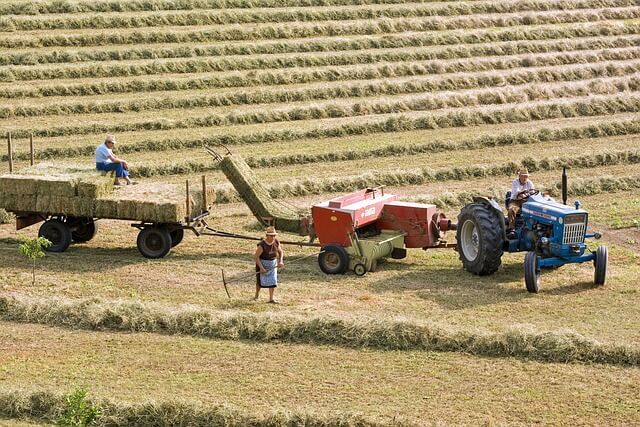
Step 7: Final Inspection Before Departure
Before you drive, do a walk-around. Check:Load stability,Strap tightness,Brake lights and signals,Load height and width,Local permit paperwork (if required)
Always prioritize safety over speed. A well-secured load protects both your product and other drivers.
Choosing the Best Trailer for Hay Transport
Not all hay bales are created equal—and neither are trailers. The type of hay, bale shape, and delivery distance all affect what kind of trailer will serve you best.
Here are some popular choices:
Flatbed Trailers – Easy loading/unloading, suitable for all bale types.
Step Deck Trailers – Help reduce overall load height while fitting more bales.
RGN (Removable Gooseneck) Trailers – Ideal for loading with machinery from the front.
Drop Deck Trailers – Provide additional vertical space for tall loads.
Low-Boy Trailers – Great for very large bales and enhanced stability on uneven roads.
Recommendation: For versatility and accessibility, flatbeds remain a farmer favorite, especially for square bale hauling.
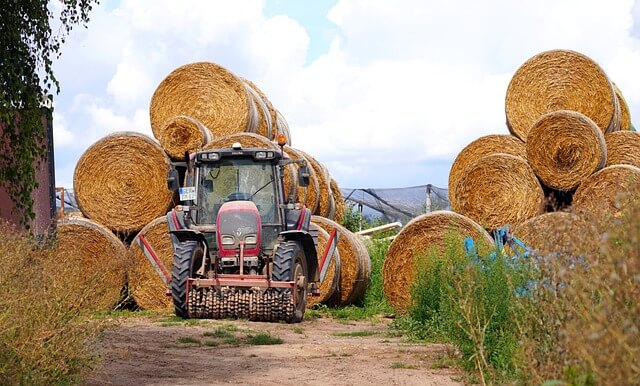
Top Safety Tips to Avoid Common Mistakes
Too many hay loading accidents happen from avoidable missteps. Here’s what to always keep in mind:
✔ Keep the loading zone clean, dry, and level
✔ Never exceed axle or vehicle load capacity
✔ Use safety cones or signals when working near traffic
✔ Wear gloves to avoid rope burns or cuts
✔ Don’t rush—one unstable bale can collapse the stack
And always drive cautiously—especially on narrow rural roads or in high wind conditions. The higher your hay stack, the more aerodynamic resistance and tipping force it will experience.
Conclusion: Secure, Smart Hay Transport Starts With Planning
Transporting hay isn’t just a chore—it’s a critical part of your livestock supply chain. A well-planned load ensures feed gets to its destination on time, in good condition, and without risk to others on the road. From selecting the right trailer to properly securing the final stack, every step contributes to smoother operations and better hay management.
And remember—if you’re looking for expert support in hay transport or equipment tailored to the job, MINNUO offers a trusted line of professional-grade farm machinery and hauling solutions designed to handle demanding agricultural workloads with safety, reliability, and ease.
Let MINNUO help you move your hay with confidence—so you can focus on what matters most: feeding and growing your farm.

